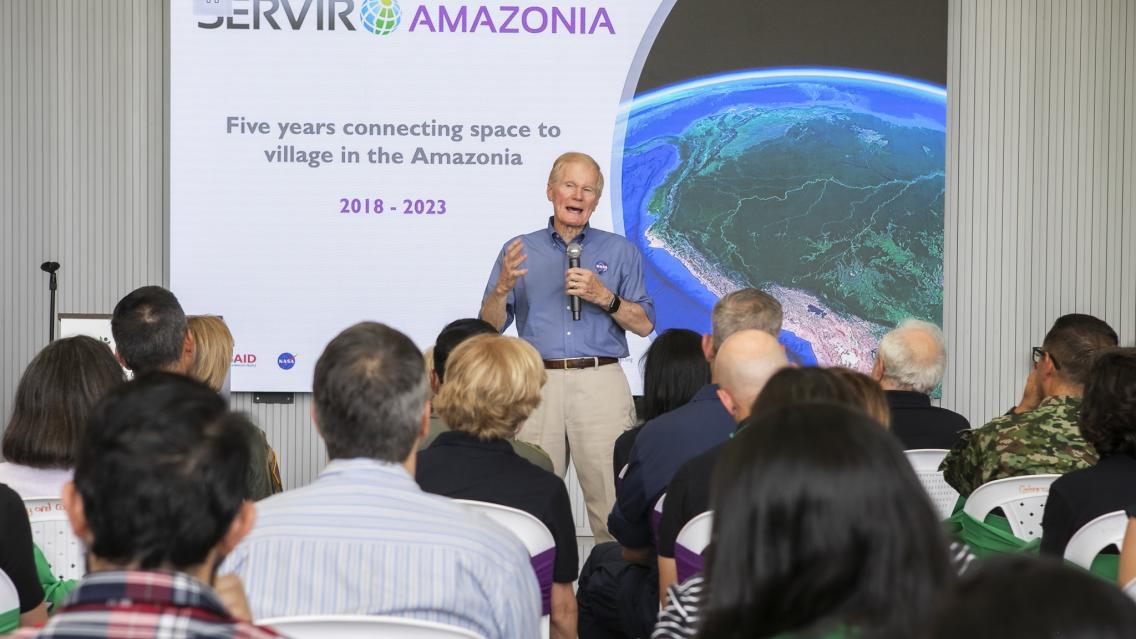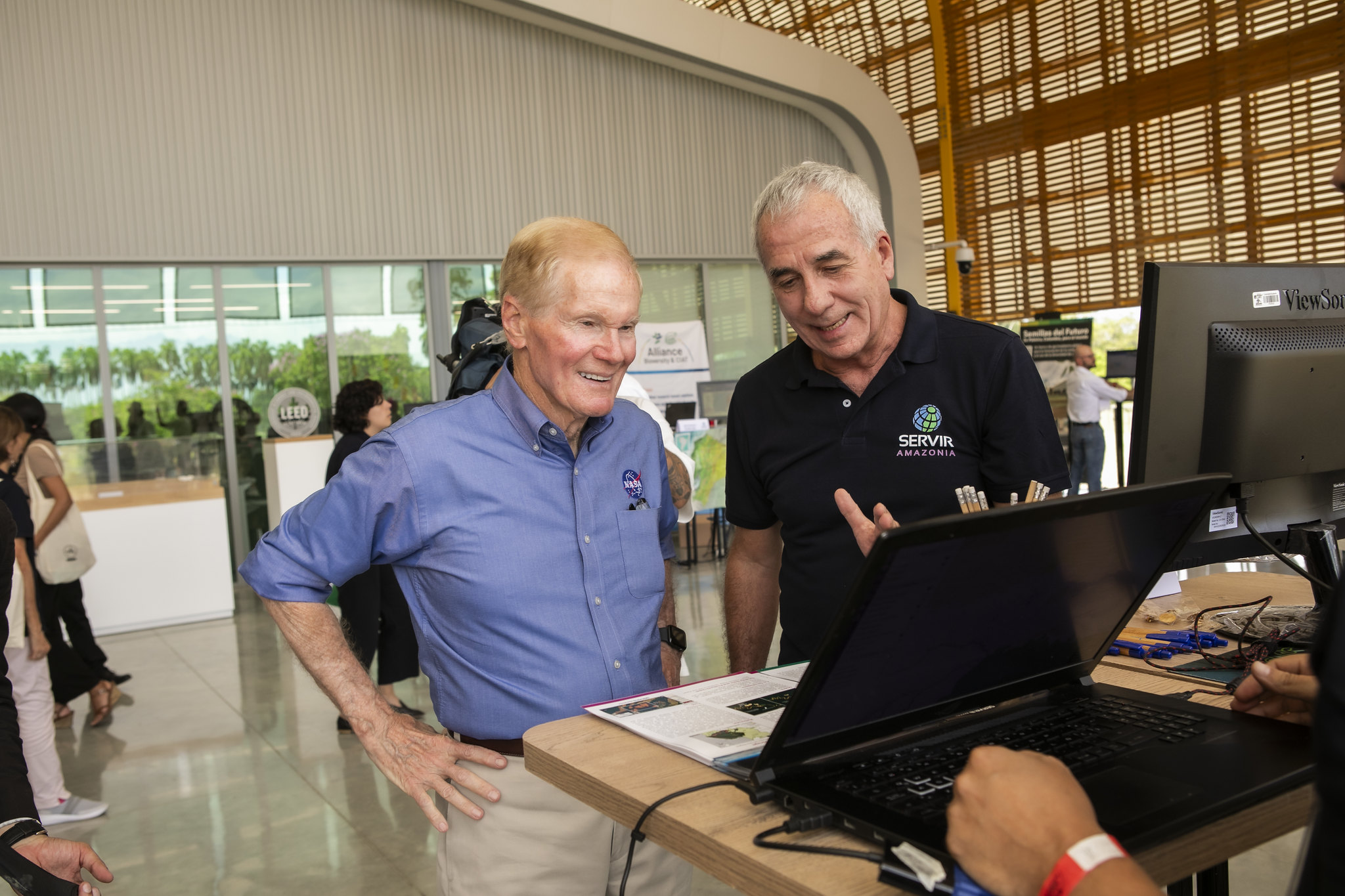NASA Administrator visit to SERVIR Amazonia Highlights Climate Efforts

On August 3, NASA Administrator Bill Nelson and former U.S. Senator Kay Bailey Hutchison visited the joint campus of the Alliance of Bioversity International and International Center for Tropical Agriculture (CIAT) in Palmira, Colombia. They were accompanied by U.S. Embassy in Colombia Chargé d'affaires Francisco Palmieri and a delegation from NASA and the United States Agency for International Development (USAID)—including USAID Colombia Mission Director Anupama Rajaraman. Together they learned first-hand about the progress of the SERVIR Amazonia Program in addressing climate change in the region.
“[NASA is] very much a climate agency, because we provide the information from our satellites that have applications here. Detailed information about, for example, what’s the moisture content in the soil, so the farmer knows what to plant there or whether or not it needs more irrigation,” Administrator Nelson commented in an interview during the event, referring to the role of satellite Earth data in addressing climate issues.
Administrator Nelson and the delegation spent two hours learning from scientists and researchers leading more than a dozen initiatives using geospatial services within the SERVIR Amazonia Program. The event included an interactive activities fair, with demonstrations about SERVIR services such as:
- Gender analysis of efforts in mangrove monitoring. SERVIR Amazonia has services to monitor loss of coastal mangrove forests in a number of countries in South America and the Caribbean. SERVIR and Arizona State University provide women technicians with professional and leadership development, and explore how to improve mangrove conservation efforts to better address the social and economic needs of everyone in the community.
- Detecting mining and deforestation. The Radar Mining Monitoring tool, also known as “RAMI,” detects patches of deforestation to help address illegal mining in the Amazon. Radar sensors can detect these deforested patches, even when nighttime or the rainforest’s cloudy weather prevent optical satellite imagery from spotting them. The RAMI tool can then highlight where local governments need to intervene.
- Understanding streamflow. SERVIR and the Group on Earth Observation’s Global Water Sustainability (GEOGloWS) developed a streamflow monitoring tool for water and flood management. In Ecuador, data from this tool informed the design and construction of an agricultural irrigation project in the Azuay province, supporting approximately 5,000 farmers.

Joe Tohme, Managing Director for the Americas of the Alliance of Biodiversity and CIAT, and Carlos Gasco, Director of the SERVIR Amazonia Program, hosted the delegation. Gasco noted that this high-level visit is a significant endorsement of the joint work to address climate change—work carried out in collaboration with governments, universities, community-based groups, and scientists from the Alliance and the United States.
"The visit of the NASA Administrator to CIAT is a great indicator of the success of the program, and of NASA’s commitment to the work SERVIR Amazonia does,” Gasco commented. “We were able to show Administrator Nelson the work we’ve accomplished in the last five years, and were encouraged by his words to continue our efforts for the future conservation of the Amazon." He also thanked the vital role of USAID and its missions in the region for making these climate efforts possible.
SERVIR Amazonia aims to understand the needs of the region and develop tools and services that inform decision-making about the environment and climate. Its approach to planning services prioritizes the inclusion of women and Indigenous peoples in the management of natural resources in the Amazon. The program currently has services in Brazil, Peru, Colombia, Ecuador, Suriname, and Guyana.
The Alliance of Bioversity International and CIAT researches solutions to improve agricultural biodiversity and make food systems more sustainable and resilient to climate change. Its priorities also include solutions to malnutrition and environmental degradation, and it has been the lead organization of the SERVIR Amazonia consortium since 2019.

